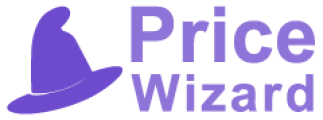In case you haven’t heard the news, Australian airline REX has been placed into voluntary administration. Most Australians will shrug their shoulders and say this development doesn’t affect them. Ironically, this is part of the reason REX has failed, as explained below.
While this article refers to the Australian airline industry, the lessons learnt are equally applicable to other industries such as Build to Rent and Hotels, and to other countries.
Personally, I’m really disappointed. My experiences with REX have all been excellent. The ticket purchasing processes were seamless. The check in processes were seamless. The flights departed on time. The service was good. My bags always arrived. And the price was right. You can’t really ask for too much more from an airline.
So, what went wrong? From where I stand, there were 3 causes of REX’s failure. At the end of the day, pricing was a big part of all 3 of these causes.
First, some background. REX was previously called Regional Express. It originally flew from capital cities to regional areas where there was little competition. Rex then decided to expand its fleet and started offering flights between Australian capital cities.
Issue 1: Marketing
The first cause of REX’s demise was that most Australians didn’t know that REX was flying between capital cities. As one small business owner in the airline industry quipped: “I probably did more marketing in a month than REX do in a year”.

Last time I flew REX, the flight was less than 50% full, which suggests a marketing issue.
However, according to other regular customers of Rex, most of their flights were actually full. The marketing manager was probably patting himself/herself on the back as a result. This raises an interesting question: If your flights are full, does that prove you don’t have a marketing problem?
The answer to this question can be found in a simple Demand Curve, straight out of the Economics 101 textbook.
Suppose a flight has capacity of 200 seats. At a price of $100, demand is sufficient such that the flight books out, as shown in the Current Demand curve in the chart below. Now, suppose the airline improved its marketing and more customers were inclined to book this flight. The Demand Curve would shift to the right, to the Potential Demand Curve. The airline could now charge $200 and still fill every seat.

In summary… Even if flights are full, an airline can still earn more by improving their marketing. In fact, they can probably earn more additional revenue by increasing demand (enabling them to put up prices), versus just selling more seats at a low price on a half empty flight.
As an aside, that’s why I had to pay a small fortune to fly back to Sydney (on QANTAS) on the day of a Taylor Swift concert. For the first time ever, I was the oldest person on the plane! QANTAS made a lot of money that day.
Issue 2: Lack of Landing slots at Sydney Airport
The fascinating aspect of REX’s schedule is that they didn’t fly at the most popular times. Because they weren’t allowed to.
Here is a list of daily QANTAS flights from Sydney to Melbourne.

Between 6am and 8am there is a flight every 15 minutes. Not only are these the most common flight times, they are also the most expensive. And that is because business people, who can afford to spend more on flights, want to fly at these times.
If REX had offered flights out of Sydney during these peak times, they could have earned more revenue per seat. However, through no fault of REX’s the landing slots at Sydney airport during those times are largely controlled by QANTAS, VIRGIN, and overseas airlines.
This forced REX to operate only at less lucrative times, so their revenue per flight was lower than it would otherwise have been.
Issue 3 – Ineffective Pricing
So far, I have discussed how REX’s flights were priced too low as a result of poor marketing and lack of access to landing slots. The 3rd issue is simply that REX didn’t price their flights correctly.
Let me tell you a story…
About 2 months ago I was travelling from Sydney to Melbourne for a conference and some business meetings. I checked my diary on the way to the airport and it showed that I had booked a 9:30am flight on QANTAS. However, I couldn’t find any record of my booking.
After a brief panic attack, I managed to compose myself. I visited the QANTAS website and found that the same 9:30 flight which I thought I had booked, was going to cost me over $1,000.

And then I had my next panic attack!
Then I visited the Virgin website. $374. A big improvement on QANTAS, but still a lot more expensive than the flight I thought I had bought with Frequent Flyer points.

You may be asking, why is QANTAS charging so much for a flight from Sydney to Melbourne? Surely flights at this time of day should cost more like $200?
If you were booking your flight 24 hours in advance, you would be correct. However, if you are booking your flight 1 hour in advance, QANTAS knows you are desperate. You are probably already on you way to the airport (like I was), or even at the airport. And you are probably a business traveller with a large budget. (I was a business traveller with a small budget!). And they take full advantage of your predicament.
Now, suppose you manage pricing for REX. Knowing that your customers are desperate, and knowing that your only competitors are charging $1,014 and $374 respectively, what would you charge? Please spend a moment thinking about that before scrolling down…
If I managed pricing for REX, this would be thought process:
- My customers are reasonably price sensitive.
- They have probably already checked the QANTAS and Virgin websites, so they know what prices those airlines are charging
- I need to charge less than both QANTAS and Virgin. Matching Virgin’s price of $374 probably won’t win this customer over. However, if I can offer a reasonable discount versus Virgin then I am in with a good shot.
I would recommend charging around $270-$299. Psychologically, it is better to have a price starting with a 2 than a 3. It might also be helpful to beat Virgin by a full $100.
If REX charged in the range of $270-$299, they would have picked up most customers who bothered to check the REX website that morning. And every other morning. They certainly would have had me as a customer.
So, what did they actually charge? Well, here is a copy of my invoice.

As you can see, REX only charged $112. They could have charged me more than double and I would still have flown with them.
What can we learn from this
There are so many lessons in this story, it is hard to know where to start. And the lessons don’t just relate to the airline industry. They can be applied to any industry, especially those industries with fixed supply such as Hotels, Build to Rent, and entertainment and transport.
Here are the key lessons that come to mind:
- Pricing correctly can add enormous value to your bottom line. In this case, REX could have double prices with no reduction in volume. There is no project in a business that will provide better ROI than getting your pricing right
- Pricing correctly requires up-to-date knowledge of your competitor’s pricing and market dynamics. This information can change quickly, so you need to constantly have your finger on the pulse.
- Better marketing will increase demand (even if you are already at capacity) and enable you to raise prices
If you would like to discuss how these lessons can be applied to your business, please contact us.





